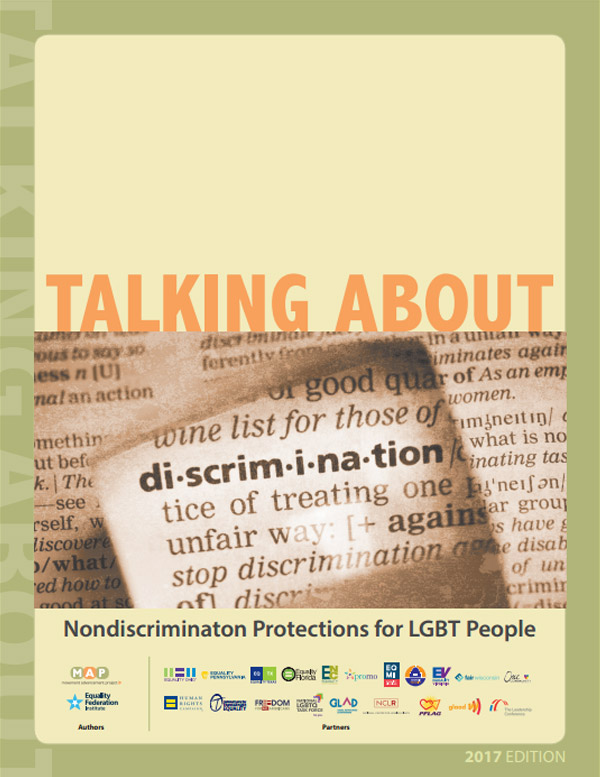The Bottom Line
Solid majorities of Americans support protecting lesbian, gay, bisexual and transgender (LGBT) people from discrimination in employment, housing and public accommodations. However, that support cannot be taken for granted, as many Americans mistakenly believe that LGBT people are already protected from discrimination. And when opponents of equality introduce false, fear-based attacks on nondiscrimination protections, people can often lose sight of their core values.
Talking About Nondiscrimination Protections for LGBT People provides conversation approaches to help build and sustain solid, lasting support for nondiscrimination laws, and also factually and effectively address concerns that might be raised when discussing the need for such laws. Among them: emphasize the values that are at the heart of people’s existing support for nondiscrimination; explain why nondiscrimination protections are important and needed; share stories and model people’s journey toward solid support; and help conflicted audiences think through and calm their own anxieties—all while avoiding missteps that can inadvertently intensify those concerns.
Talking About Nondiscrimination Protections for LGBT PeopleDownload
Recommended citation:
Movement Advancement Project and Equality Federation Institute. January 2017. "Talking About Nondiscrimination Protections for LGBT People." 2017 Edition. MAP's
Talking About LGBT Issues Series.
https://www.lgbtmap.org/talking-about-nondiscrimination-protections-for-lgbt-people (date of access).
Cómo hablar sobre protecciones antidiscriminatorias para personas LGBT
La gran mayoría de estadounidenses apoya la protección a personas lesbianas, gays, bisexuales y transgénero (LGBT) contra la discriminación en lo relacionado con el trabajo, la vivienda y las instalaciones públicas. Sin embargo, ese apoyo no puede darse por hecho, especialmente porque la mayoría de los estadounidenses piensa, erróneamente, que las personas LGBT ya están protegidas contra la discriminación. Cuando quienes se oponen a la igualdad realizan ataques falsos, basados en el miedo, contra las protecciones antidiscriminatorias, a menudo logran que las personas pierden de vista sus valores fundamentales.
Cómo hablar sobre protecciones antidiscriminatorias para personas LGBT proporciona enfoques comprobados para construir y mantener un apoyo sólido y duradero a favor de leyes antidiscriminatorias y también aborda, de manera objetiva y eficaz, las dudas que podrían surgir cuando se habla de la necesidad de tener tales leyes. Entre otras cosas, sugiere: recalcar los valores centrales por los cuales las personas apoyan la no discriminación; explicar por qué es importante y necesario contar con protecciones antidiscriminatorias; compartir historias y ejemplificar el camino de las personas hacia un apoyo duradero; y ayudar a quienes se sienten inseguros sobre este tema, a analizar y calmar sus ansiedades, al mismo tiempo que se evita cometer errores que podrían causar, sin querer, que estas preocupaciones se intensifiquen.
Cómo hablar sobre protecciones antidiscriminatorias para personas LGBTDescargar


